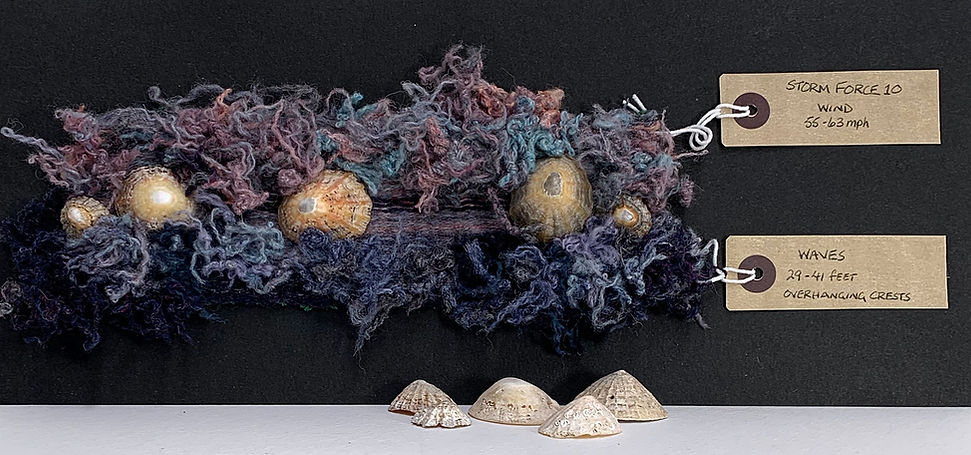Tenacity and other Characteristics

The peculiar qualities of a limpet

The rocky shore of Orkney where wild northern waves batter 'limpetland'
January 2022
The Tenacity of Limpets
If we were to define the key characteristic of limpets it would have to be tenacity says marine ecologist, Dr Louise Firth. Limpets are well known for their ability to strongly attach to the substrate on which they live, an adaptation to survive in the intertidal zone on rocky shores. This attribute prevents desiccation at low tide, protects against predatory attack and enables the limpet to withstand the force of rough seas.

Louise showing me the muscular, peachy coloured foot of Patella ulyssiponensis or China Limpet

Stuck like Glue
"Limpets - those coin-sized, suction-cup critters with conical caps - have had the experts fooled all along"
According to this newspaper article, researchers have discovered that common limpets do not clamp their shells onto rocks with their muscular foot alone as thought for more than a century. The study shows that limpets are able to adhere to the wet surfaces on which they live by secreting a bioadhesive mucus. Scientists are interested in finding out what this glue-like substance is composed of and how it works as it may help in the development of synthetic adhesives for use in medicine or food.
The full research article is here.
Woven Waves

Wool and limpet shells
Susan Timmins
2021
This woven work, made for The Limpetarium by Susan Timmins exudes such energy, conveying what the northern limpets of Shetland have to contend with...
Colour and Form




Newport Sands, September 2021
Portable Limpetarium 2
Newport Sands, Pembrokeshire, Wales, 2021
Journeying west this time with the second of my portable research cabinets. This multi-layered, compartmentalised box was given to me by artist Elena Thomas who said it had been sat on her shelves for years waiting for the right moment...
I fitted the cabinet out with everything needed to create limpet studies in watercolour. Due to their patelliform or dish-shaped structure, common limpet shells, when turned upside down form ideal vessels for mixing small quantities of watercolour paint. There is archaeological evidence to suggest that shells have been used as paint palettes for thousands of years.
If we look closely enough, common limpet shells can be seen to have an extraordinarily beautiful range of colours within their outer and interior surfaces. I have seen some with an inner layer of iridescent nacre or mother-of-pearl.
Limpet Concrete Mix

Image: Martin Grey, August 2021
Martin Gray ,The Orkney Beachcomber sent me this picture of an old fence strainer which he came across along the Tankerness shore. It is made from shell sand from the beach, which includes periwinkle and limpet in the amalgam. Martin thinks it was made sometime in the 1970's. Maybe the high concentration of calcium carbonate (limestone) in the shell structure helps make this a strong 'sea-stone'?
Limpet Studies


Watercolour on paper, 2021


Erosion


Limpet shells and plaster, 2020
I have spent quite some time considering how long it might take a limpet shell to degrade, break down, gradually wear away into sand and then into nothing. It seems there is no straightforward answer to this question, it depends... on the size of the shell, the action of myriad biodegrading organisms, the composition of the beach, wave action and the increasing acidification of the ocean associated with climate change.
Limpet Goggles

Esme, 2021

Zoe, 2004
It seems that limpet shells serve really well as children's eye wear!
These images were sent in to The Limpetarium by Esme's Dad, Lloyd and Zoe's Dad, Rick.
Limpet Drum Kit

Limpet shells, latex membrane and repurposed wooden box, 2022
In January 2022 I was introduced to a student at Orkney College who was studying for her BA in Art and Design. She showed me her work which involved a process of combining seaweed with latex, with fascinating results. We spend an hour or so together and started experimenting with latex and limpets. We discovered that limpet shells have an unexpected acoustic quality when a thin latex membrane is stretched across them. This inevitably led to me making and playing a limpet drum kit!